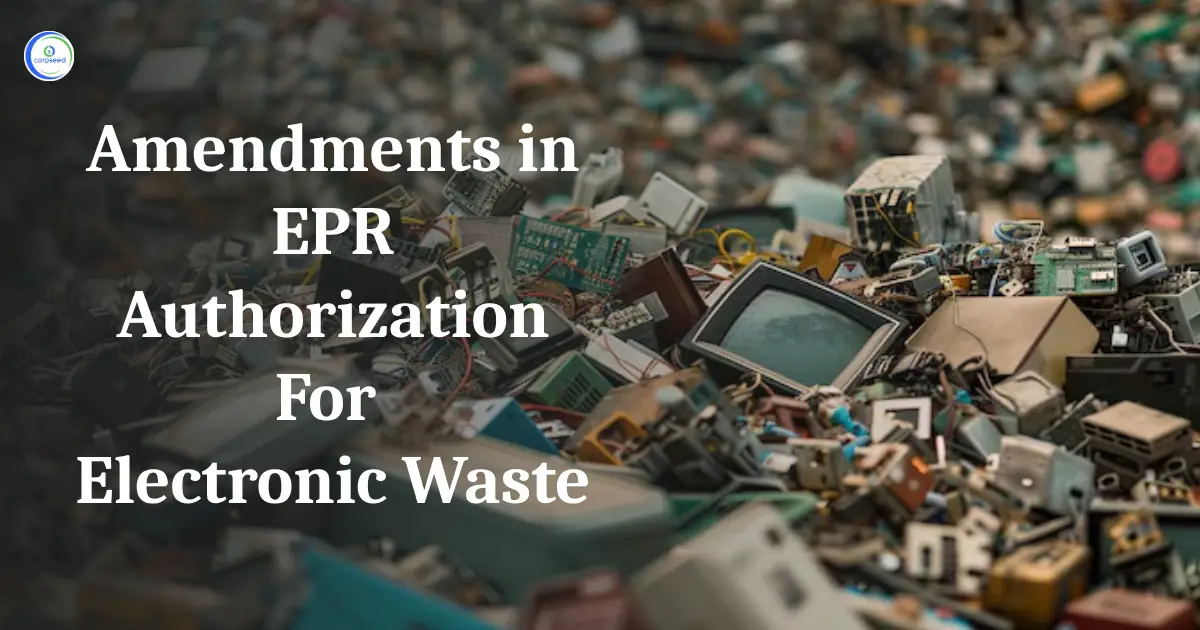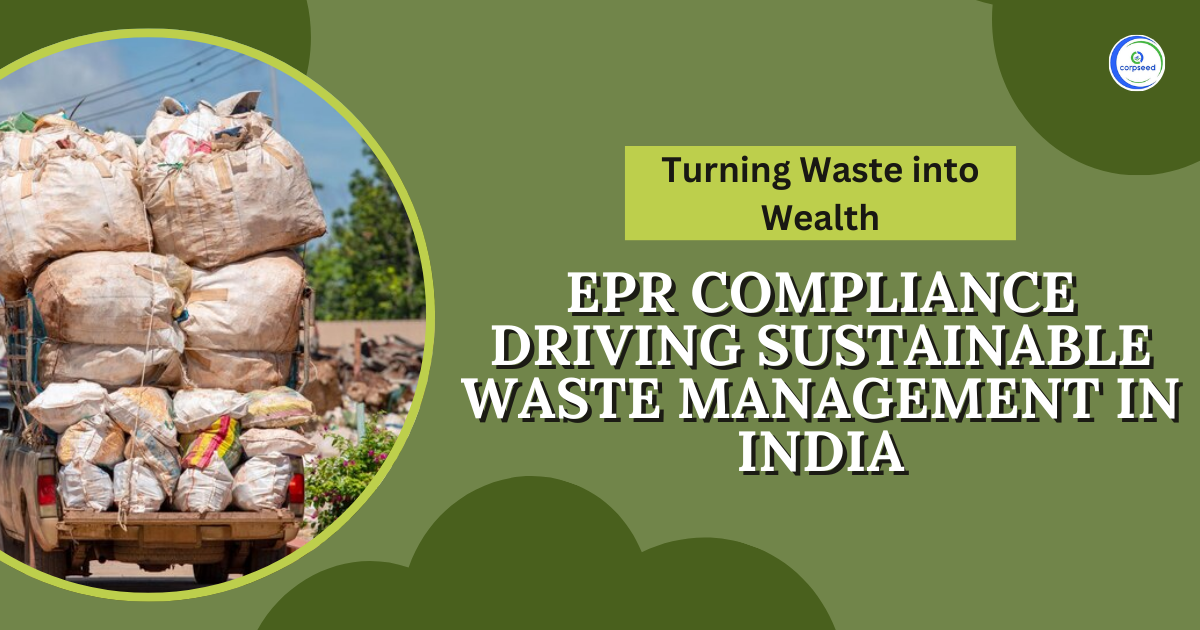Introduction: EPR for Plastic Packaging
The Ministry of Environment, Forest, and Climate Change (MoEFCC) notified the guidelines on EPR for Plastic Packaging on 16th February 2022. These guidelines are part of Schedule-II under Plastic Waste Management (Amendment) Rules, 2022.
Table of Contents
- Introduction: EPR for Plastic Packaging
- Targets for EPR and obligations of PIBO
- Sale and Purchase, Carry forward and Offsetting of surplus EPR certificates
- Imposition of Environmental Compensation
- Roles and Responsibilities of PIBOs:
- Roles and Responsibilities of Waste Processors:
- Committee for EPR under PWM Rules:
EPR as the title suggests is the liability of a producer for the environmentally sensible management of the product until the very end of its life.
The Entities that are obliged under these guidelines are as follows:
- Producer (P) of plastic packaging
- Importer (I) of all imported plastic packaging and/or plastic packaging of imported products
- Brand Owner (BO) encompassing online platforms/market places and supermarkets/ retail chains distinct from those, which are micro and small enterprises as per the standards of Ministry of Micro, Small and Medium Enterprises, Government of India
- Plastic Waste Processors
Four Plastic Packaging Categories are presented in these guidelines which are mentioned underneath:
- Category I:- Rigid plastic packaging
- Category II:- Flexible plastic packaging of a single layer or multilayer (more than one layer with differing types of plastic), plastic sheets or like and covers made from plastic sheet, carry bags, plastic sachet or pouches
- Category III:- Multilayered plastic packaging (at least one layer of plastic and a minimum of one layer of material aside from plastic)
- Category IV:- Plastic sheet or like used for packaging and carry bags made from compostable plastics
Registration:
A centralized portal has been commenced by CPCB for the registrations and all other matters related to plastic waste handling and EPR. PIBO and Plastic Waste Processor operating in more than two states are to be listed on the portal by CPCB. On the other hand, the PIBO and Waste Processor running in one or two states are to be listed on the portal by the concerned SPCB or PCC.
During registration, the entities shall submit:
- PAN Number
- GST Number
- CIN Number of the Company
- Aadhar Number
- PAN Number of the authorized person
Targets for EPR and obligations of PIBO
Producers
- EPR target:- Eligible quantity (in MT) = Average weight of plastic packaging material (category-wise) sold in last two fiscal years + Average quantity of pre-consumer plastic packaging waste in the last two fiscal years – Annual quantity supplied to the entities in the former fiscal year
| Plastic packaging category | Year | EPR target (as %age of eligible quantity – category-wise) |
| 1 | 2021-22 | 25% |
| 2 | 2022-23 | 70% |
| 3 | 2023-24 | 100% |
- Obligation for Recycling:- Minimal level of recycling (barring end of life disposal) of plastic packaging waste
(% of EPR target)
| Plastic packaging category | 2024-25 | 2025-26 | 2026-27 | 2027-28 and onwards |
| 1 | 50 | 60 | 70 | 80 |
| 2 | 30 | 40 | 50 | 60 |
| 3 | 30 | 40 | 50 | 60 |
| 4 | 50 | 60 | 70 | 80 |
- End of life disposal: - Plastics which can’t be reclaimed are to be dispatched for end of life disposal.
- Obligation for the usage of recycled plastic content:- Obligatory usage of recycled plastic in plastic packaging
(% of plastic produced for the year)
| Plastic packaging category | 2025-26 | 2026-27 | 2027-28 | 2028-29 and onwards |
| 1 | 30 | 40 | 50 | 60 |
| 2 | 10 | 10 | 20 | 20 |
| 3 | 5 | 5 | 10 | 10 |
Importers
- EPR target:- Eligible quantity (in MT) = Average weight of all plastic packaging material and / or plastic packaging of imported products (category-wise) imported and sold in the last two fiscal years + Average quantity of pre-consumed plastic packaging in the last two fiscal years – Annual quantity supplied to the entities in the formal fiscal years
| Plastic packaging category | Year | EPR target (as %age of eligible quantity – category-wise) |
| 1 | 2021-22 | 25% |
| 2 | 2022-23 | 70% |
| 3 | 2023-24 | 100% |
- Obligation for Recycling:- Minimal level of recycling (barring end of life disposal) of plastic packaging waste
(% of EPR target)
| Plastic packaging category | 2024-25 | 2025-26 | 2026-27 | 2027-28 and onwards |
| 1 | 50 | 60 | 70 | 80 |
| 2 | 30 | 40 | 50 | 60 |
| 3 | 30 | 40 | 50 | 60 |
| 4 | 50 | 60 | 70 | 80 |
In the case of Category IV, a minimal level of recycling means the processing of plastic packaging waste for composting through industrial composting facilities.
End of life disposal:- Plastics that can’t be reclaimed are to be dispatched for end-of-life disposal.
Obligation for the usage of recycled plastic content:- Obligatory usage of recycled plastic in plastic packaging
(% of plastic produced for the year)
| Plastic packaging category | 2025-26 | 2026-27 | 2027-28 | 2028-29 and onwards |
| 1 | 30 | 40 | 50 | 60 |
| 2 | 10 | 10 | 20 | 20 |
| 3 | 5 | 5 | 10 | 10 |
Brand-Owners
- EPR target:- Eligible Quantity (in MT) = Average weight of virgin plastic packaging material (category-wise) bought and introduced in market in the last two fiscal years + Average quantity of pre-consumer plastic packaging in the last two fiscal years
| Plastic packaging category | Year | EPR target (as %age of eligible quantity – category-wise) |
| 1 | 2021-22 | 25% |
| 2 | 2022-23 | 70% |
| 3 | 2023-24 | 100% |
Obligation for reuse
The Brand Owner using Category I (rigid) plastic packaging for their products shall have minimal obligation to exercise similar packaging as given below: Reuse of Category I rigid plastic packaging in food contact operations shall be subject to the regulation of FSSAI
Minimal obligation to reuse for Category I (rigid plastic packaging)
| Plastic packaging category | Year | Target (as percentage of Category I rigid plastic packaging in products sold annually) |
| A | Category I rigid plastic packaging with volume or weight equal or more than 0.9 litre or kg but lower than 4.9 litres or kg, as the case may be | |
| 1 | 2025-26 | 10 |
| 2 | 2026-27 | 15 |
| 3 | 2027-28 | 20 |
| 4 | 2028-29 and onwards | 25 |
| B | Category I rigid plastic packaging with volume of weight equal or more than 4.9 litres or kg | |
| 1 | 2025-26 | 70 |
| 2 | 2026-27 | 75 |
| 3 | 2027-28 | 80 |
| 4 | 2028-29 and onwards | 85 |
Quantity of rigid packaging reused by brand owner shall be calculated by reducing virgin plastic packaging manufactured/imported/bought in that year from the sales of the BO. The BO shall give this information on the centralized portal developed by CPCB
Quantity of Category I rigid plastic packaging reused shall be reduced from the total plastic packaging used under Category I by the obligated entities (BO)
The quantity of Category I rigid plastic packaging reused during the year 2022-2023 and 2023-2024 shall be reduced from the total plastic packaging used under Category I.
- Obligation for recycling:- Minimum level of recycling (excluding end of life disposal) of plastic packaging waste
(% of EPR target)
| Plastic packaging category | 2024-25 | 2025-26 | 2026-27 | 2027-28 and onwards |
| 1 | 50 | 60 | 70 | 80 |
| 2 | 30 | 40 | 50 | 60 |
| 3 | 30 | 40 | 50 | 60 |
| 4 | 50 | 60 | 70 | 80 |
- End of life disposal:- Plastics which can’t be reclaimed are to be dispatched to end of life disposal.
- Obligation for use of recycled plastic content:- Obligatory use of recycled plastic in plastic packaging
(% of plastic manufactured for the year)
| Plastic packaging category | 2025-26 | 2026-27 | 2027-28 | 2028-29 and onwards |
| 1 | 30 | 40 | 50 | 60 |
| 2 | 10 | 10 | 20 | 20 |
| 3 | 5 | 5 | 10 | 10 |
Sale and Purchase, Carry forward and Offsetting of surplus EPR certificates
PIBOs can make use of their surplus EPR certificates in offsetting last year shortfall, carry forward into coming year and dealing it to other PIBOs. The offsetting, carry forward and sale of a surplus in one category can be used in the same category only.
PIBOs are required to file periodic targets and returns on the online portal created by CPCB under the EPR framework. The deals (offsetting, carry forward, sale and purchase) shall be recorded and submitted on the portal.
Imposition of Environmental Compensation
- The guidelines for the imposition and collection of environmental compensation shall be laid down by CPCB.
- The compensation shall be levied by CPCB on PIBOs functioning in more than two states.
- The compensation shall be levied by SPCB on PIBOs functioning in their respective jurisdictions.
The unfulfilled EPR obligations for a specific year are going to be carried forward to the subsequent year for a period of three years. The compensation levied shall be returned to PIBOs in case the EPR obligations are addressed within three years in the following ways:
- Within one year of levying of EC: 75% return
- Within two years: 60% return
- Within three years: 40% return
Roles and Responsibilities of PIBOs:
PIBOs shall submit an Action Plan (covering tenure of registration) having information on the EPR, category-wise, on the centralized portal in addition to registration or renewal of registration.
In order to promote collection of plastic packaging waste, PIBOs can operate models like buy back, establishing waste plastic collection points or deposit refund system.
Roles and Responsibilities of Waste Processors:
They shall register themselves with the concerned SPCB or PCC on the centralized portal. They shall submit information regarding quantity of plastic waste processed category-wise and plastic waste attributed to PIBOs on an annual basis. The registered Waste Processors shall certify PIBOs for plastic waste processing which shall be considered for fulfilment of their EPR obligations. The Plastic Waste Processor performing end-of-life disposal of plastic packaging waste must give information annually on the centralized portal.
Committee for EPR under PWM Rules:
A committee shall be constituted by CPCB under the chairmanship of Chairman, CPCB. This committee shall monitor the implementation of EPR guidelines.
This portion of the site is for informational purposes only. The content is not legal advice. The statements and opinions are the expression of author, not corpseed, and have not been evaluated by corpseed for accuracy, completeness, or changes in the law.
BOOK A FREE CONSULTATION
Get help from an experienced legal adviser. Schedule your consultation at a time that works for you and it's absolutely FREE.
_for_Plastic_Packaging_Waste_Corpseed.png)




.webp)



